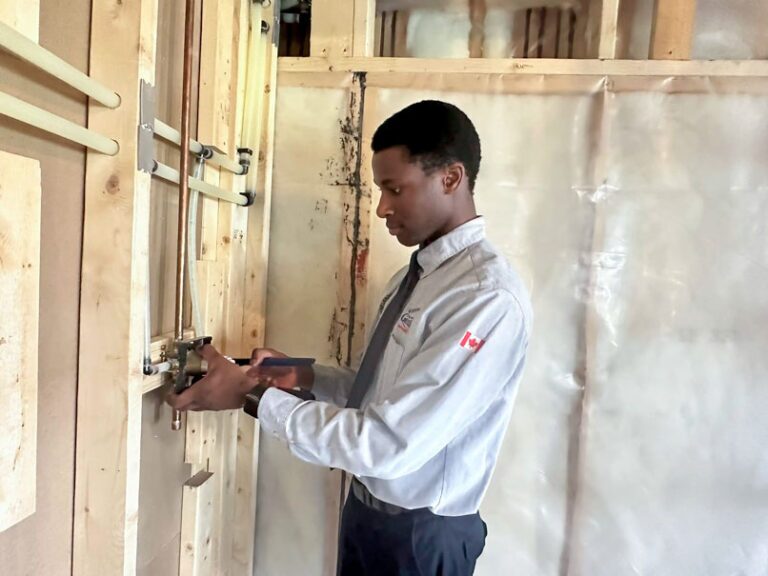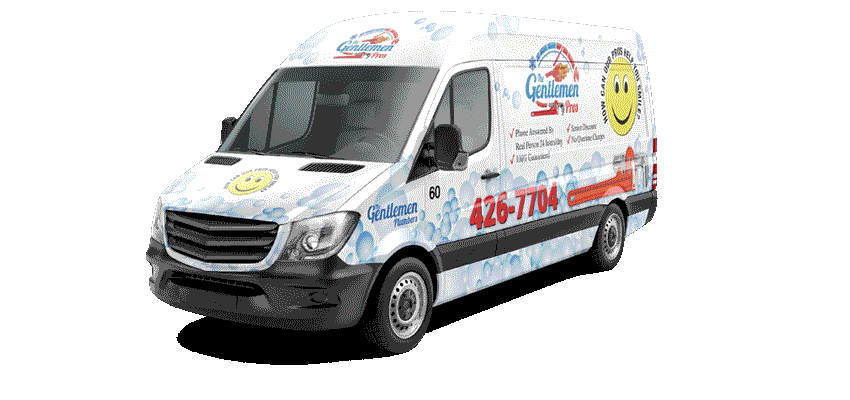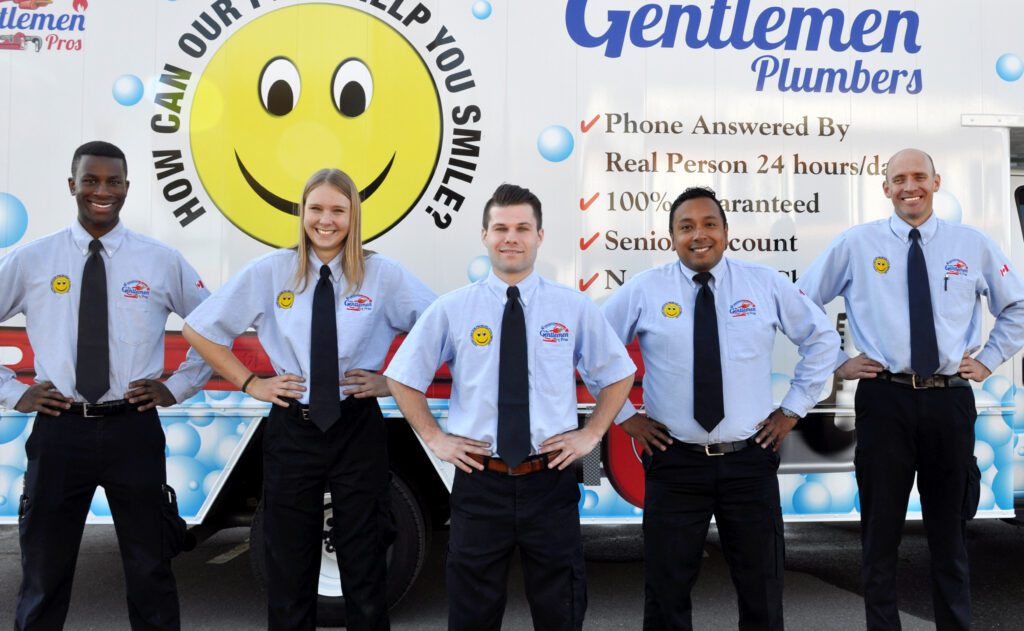
Same Day Service
Since 1992
Call The Gentleman Pros Now!
(403) 879-1759

Is your current water heater not providing enough hot water for your household? Are you considering a point-of-use water heater? Are you thinking about replacing your hot water heater with a tankless water heater? Are you considering a tankless water heater for your new home? Here is the skinny on tankless water heaters and point-of-use tankless water heaters.
“I had my hot water tank die on me over the weekend. Gage did an amazing job diagnosing and giving all the options to get me up and running. I will definitely be using their services in the future.” Nick W

A tankless hot water heater or known as an on-demand water heater differs from a traditional hot water heater because it does not have a tank. A tankless system heats the water as it flows through the heat exchanger as the water is demanded. This can save energy because it does not require the cost of heating an entire tank of water.
A tankless hot water heater, or on-demand water heater, instantly trips on a flow sensor as it moves through the heat exchange. Because there is no hot water storage, a tankless hot water heater requires a stronger BTU (more flame) or more electricity to heat enough water for an entire household.
A point-of-use system does not replace the need for a water heater for an entire household but rather serves just one fixture.
Point-of-use tankless heaters are typically less convenient because it is difficult to run gas lines through a home for a tankless system, therefore they often use electricity. Electric POU tankless hot water systems use a lot of electricity and are more expensive to operate than natural gas or propane.
A natural gas tankless hot water heater requires less natural gas to heat each month.
A new home, depending on the price of natural gas, could save the homeowner $30 each month by having a tankless water heater.
Unfortunately, the cost to retrofit a home with a tankless hot water system that can supply the entire home (including multiple fixtures at a time), could require a larger gas lines. Typically any cost savings in a retrofit installation would eat the monthly savings on the homeowner’s utility bill.
Tankless hot water heaters also require regular maintenance, especially in an area where there is hard water. In Alberta, most municipalities have hard water.
If you require a service call to maintain your tankless system, it will eat the yearly cost savings.
A hot water tank will store hot water for the entire household, as long as the tank is proportionate to the number of individuals living in the home. A hot water tank needs very little maintenance.
A POU system is ideal in a situation where the hot water tank is not large enough to supply the demanded amount of water, specifically a shower or dishwasher or washing machine. The cost to install a point-of-use water heater is much less than a tankless water heater for the entire home.
Whole house tankless water heaters are ideal for large households that demand hot lots of hot water, especially if the home is a new build where the gas line can be designed to meet the needs of a tankless system.
Retrofitting a home for a tankless system is not ideal.
Though the operating cost for a tankless water heater is less, the installation can be very expensive. Ideally, a home should be fitted for a household tankless water heater at the time of the build.
Ideally, the tankless hot water system should be placed in the utility room near the gas lines, central to all the homes’ water fixtures.
POU tankless heaters are ideal for an outdoor fixture or an addition, saving the cost of running hot water lines to the area.
Also, POU tankless heater is helpful when the Hot water tank isn’t large enough to meet the demands of the household, for example installing on POU tankless hot water heater on a shower would be helpful.
Be sure to do a cost comparison before moving forward with a tankless water heater.
A cost comparison will help you determine if the cost is worth the investment. Be sure to factor in the time or cost to service the tankless hot water heater. A tankless system is green and demands less energy and therefore reduces your environmental footprint.
A POU tankless hot water system would cost about half as much, but there are factors that would influence the cost. Moving gas lines or requiring electrical work for the tankless system would increase the installation cost.
Moving gas lines for a POU system would be costly and not ideal. An electrical POU system would likely require less cost but would have a higher operating cost.
Make sure the tankless hot water heater is sized appropriately for the home. Ensure that the installation quote includes the cost to upsize the gas line.
Compare quotes, and don’t be fooled by the price.
Ensure that the installer is not cutting any corners. Beware that a smaller BTU rating will not provide the water needs for an entire household.
A tankless hot water heater that has a smaller BTU requirement, will not be effective in heating enough water to meet the needs of an entire household. Buyer beware, the installation would be less expensive because the gas line would not have to be upgraded, but the output of hot water would be considerably less.
In Alberta, most of our drinking water is hard. Hard water is the result of either calcium or magnesium in high concentrations in your drinking water. These minerals come from rocks dissolving in our river system such as limestone.
Hard water scale builds up on tankless water heaters over time. As the build-up coats the inside of the tankless heater it becomes less efficient.
Regularly flushing the tankless water heater will prolong its life and maintain efficiency.
Schedule a call today. One of the technicians can service and flush the mineral buildup from your tankless system.



